Windows Crucial Scanner
Posted: April 14, 2012
Threat Metric
The following fields listed on the Threat Meter containing a specific value, are explained in detail below:
Threat Level: The threat level scale goes from 1 to 10 where 10 is the highest level of severity and 1 is the lowest level of severity. Each specific level is relative to the threat's consistent assessed behaviors collected from SpyHunter's risk assessment model.
Detection Count: The collective number of confirmed and suspected cases of a particular malware threat. The detection count is calculated from infected PCs retrieved from diagnostic and scan log reports generated by SpyHunter.
Volume Count: Similar to the detection count, the Volume Count is specifically based on the number of confirmed and suspected threats infecting systems on a daily basis. High volume counts usually represent a popular threat but may or may not have infected a large number of systems. High detection count threats could lay dormant and have a low volume count. Criteria for Volume Count is relative to a daily detection count.
Trend Path: The Trend Path, utilizing an up arrow, down arrow or equal symbol, represents the level of recent movement of a particular threat. Up arrows represent an increase, down arrows represent a decline and the equal symbol represent no change to a threat's recent movement.
% Impact (Last 7 Days): This demonstrates a 7-day period change in the frequency of a malware threat infecting PCs. The percentage impact correlates directly to the current Trend Path to determine a rise or decline in the percentage.
| Ranking: | 5,534 |
|---|---|
| Threat Level: | 1/10 |
| Infected PCs: | 1,731 |
| First Seen: | April 14, 2012 |
|---|---|
| Last Seen: | September 20, 2023 |
| OS(es) Affected: | Windows |
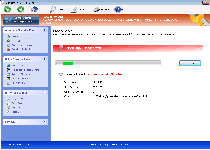 Windows Crucial Scanner is a late entry into a family of rogue anti-virus programs that use inaccurate system alerts and scanner results that aren't in sync with reality to promote themselves and steal money in exchange for worthless security features. Like all members of FakeVimes that SpywareRemove.com malware researchers have had a chance to analyze, Windows Crucial Scanner is also capable of hijacking your online searches or blocking real security programs, with victimized software including even basic Windows utilities like Task Manager. Since these attributes upgrade Windows Crucial Scanner from a mere annoyance to an actual threat to your computer's security, removing Windows Crucial Scanner quickly and with adept anti-malware software is always the recommended solution to any observed Windows Crucial Scanner infection.
Windows Crucial Scanner is a late entry into a family of rogue anti-virus programs that use inaccurate system alerts and scanner results that aren't in sync with reality to promote themselves and steal money in exchange for worthless security features. Like all members of FakeVimes that SpywareRemove.com malware researchers have had a chance to analyze, Windows Crucial Scanner is also capable of hijacking your online searches or blocking real security programs, with victimized software including even basic Windows utilities like Task Manager. Since these attributes upgrade Windows Crucial Scanner from a mere annoyance to an actual threat to your computer's security, removing Windows Crucial Scanner quickly and with adept anti-malware software is always the recommended solution to any observed Windows Crucial Scanner infection.
Why Windows Crucial Scanner's Scans are Only Central to Its Ability to Con You
Since its appearance is copied from legitimate (albeit outdated) Windows security software, Windows Crucial Scanner does a convincing job of looking like anti-virus software, but when it comes to Windows Crucial Scanner's real functions, there's nothing there to back up its claims. Everything from its supposed process monitor (a contrived way of blocking Task Manager) to its anti-phishing protection is fake, and SpywareRemove.com malware researchers particularly recommend that you ignore any recommendations, warnings or alerts that Windows Crucial Scanner might provide. Members of the Win32/FakeVimes family are known for reusing both their interfaces and their popup warnings with different brand names, and Windows Crucial Scanner is no exception.
Because Windows Crucial Scanner launches itself automatically and refuses to be closed or uninstalled by normal methods, you can expect any contact with a Windows Crucial Scanner-infected PC to be filled with such pop-ups indefinitely. Windows Crucial Scanner can be forced to reduce the frequency of some of its attacks by inputting the registration code '0W000-000B0-00T00-E0020,' although this should be considered just a preliminary procedure before you can delete Windows Crucial Scanner appropriately.
A Few Extra Reasons Why Windows Crucial Scanner's Deletion Should Be Your Top Priority
Fraudulent pop-ups and self-promoting registration offers may be Windows Crucial Scanner's most visible attacks, but they're far from Windows Crucial Scanner's most dangerous ones, as SpywareRemove.com malware researchers have found. Other symptoms of a Windows Crucial Scanner infection can cause widespread security risks due to attacks that can include:
- Browser redirects that force you to load unusual and harmful websites. Windows Crucial Scanner's family is noted to prefer redirect attacks that hijack online search sites.
- Blocked security programs. While Windows Crucial Scanner hasn't been found to damage such applications, setting changes that Windows Crucial Scanner makes will cause these applications to be inaccessible until Windows Crucial Scanner is shutdown and completely removed.
- Security settings that are changed to cause your browser to be more vulnerable than usual to attacks, especially regarding files with invalid identification signatures.
Other members of Win32/FakeVimes that, along with Windows Crucial Scanner, are capable of causing these symptoms include Privacy Guard Pro, PrivacyGuard Pro 2.0, Extra Antivirus, Fast Antivirus 2009, Presto TuneUp, Windows Security Suite, Smart Virus Eliminator, Packed.Generic.245, Volcano Security Suite, Windows Enterprise Suite, Enterprise Suite, Additional Guard, Live PC Care, PC Live Guard, Live Enterprise Suite, Security Antivirus, My Security Wall, CleanUp Antivirus and Smart Security.
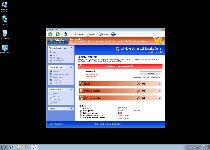
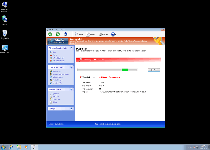
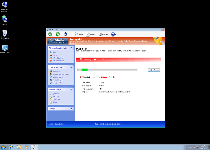
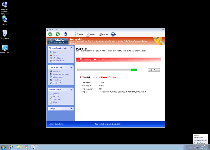
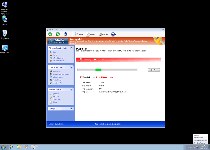
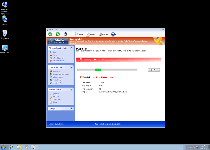
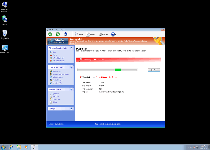
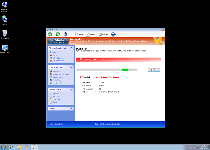
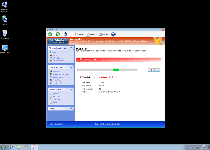
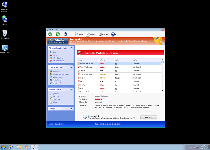
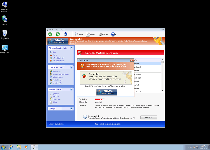
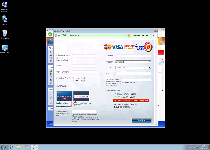
Technical Details
File System Modifications
Tutorials: If you wish to learn how to remove malware components manually, you can read the tutorials on how to find malware, kill unwanted processes, remove malicious DLLs and delete other harmful files. Always be sure to back up your PC before making any changes.
The following files were created in the system:%AppData%\NPSWF32.dll
File name: %AppData%\NPSWF32.dllFile type: Dynamic link library
Mime Type: unknown/dll
Group: Malware file
%AppData%\Protector-[RANDOM 3 CHARACTERS].exe
File name: %AppData%\Protector-[RANDOM 3 CHARACTERS].exeFile type: Executable File
Mime Type: unknown/exe
Group: Malware file
%AppData%\result.db
File name: %AppData%\result.dbMime Type: unknown/db
Group: Malware file
%CommonStartMenu%\Programs\Windows Crucial Scanner.lnk
File name: %CommonStartMenu%\Programs\Windows Crucial Scanner.lnkFile type: Shortcut
Mime Type: unknown/lnk
Group: Malware file
%Desktop%\Windows Crucial Scanner.lnk
File name: %Desktop%\Windows Crucial Scanner.lnkFile type: Shortcut
Mime Type: unknown/lnk
Group: Malware file
Registry Modifications
HKEY..\..\{Value}HKEY_CURRENT_USER\Software\Microsoft\Windows\CurrentVersion\Internet Settings "WarnOnHTTPSToHTTPRedirect" = 0HKEY_CURRENT_USER\Software\Microsoft\Windows\CurrentVersion\Policies\System "DisableRegedit" = 0HKEY_CURRENT_USER\Software\Microsoft\Windows\CurrentVersion\Policies\System "DisableRegistryTools" = 0HKEY_CURRENT_USER\Software\Microsoft\Windows\CurrentVersion\Policies\System "DisableTaskMgr" = 0HKEY_CURRENT_USER\Software\Microsoft\Windows\CurrentVersion\Settings "net" = "2012-4-7_2"HKEY_CURRENT_USER\Software\Microsoft\Windows\CurrentVersion\Settings "UID" = "ahwohainwk"HKEY_LOCAL_MACHINE\SOFTWARE\Microsoft\Windows\CurrentVersion\policies\system "ConsentPromptBehaviorAdmin" = 0HKEY_LOCAL_MACHINE\SOFTWARE\Microsoft\Windows\CurrentVersion\policies\system "ConsentPromptBehaviorUser" = 0HKEY_LOCAL_MACHINE\SOFTWARE\Microsoft\Windows\CurrentVersion\policies\system "EnableLUA" = 0HKEY..\..\..\..{Subkeys}HKEY_LOCAL_MACHINE\SOFTWARE\Microsoft\Windows NT\CurrentVersion\Image File Execution Options\advxdwin.exeHKEY_LOCAL_MACHINE\SOFTWARE\Microsoft\Windows NT\CurrentVersion\Image File Execution Options\aswRunDll.exeHKEY_LOCAL_MACHINE\SOFTWARE\Microsoft\Windows NT\CurrentVersion\Image File Execution Options\aswUpdSv.exeHKEY_LOCAL_MACHINE\SOFTWARE\Microsoft\Windows NT\CurrentVersion\Image File Execution Options\atcon.exeHKEY_LOCAL_MACHINE\SOFTWARE\Microsoft\Windows NT\CurrentVersion\Image File Execution Options\bidef.exeHKEY_LOCAL_MACHINE\SOFTWARE\Microsoft\Windows NT\CurrentVersion\Image File Execution Options\dvp95.exeHKEY_LOCAL_MACHINE\SOFTWARE\Microsoft\Windows NT\CurrentVersion\Image File Execution Options\inetlnfo.exeHKEY_LOCAL_MACHINE\SOFTWARE\Microsoft\Windows NT\CurrentVersion\Image File Execution Options\MSASCui.exeHKEY_LOCAL_MACHINE\SOFTWARE\Microsoft\Windows NT\CurrentVersion\Image File Execution Options\ozn695m5.exeHKEY_LOCAL_MACHINE\SOFTWARE\Microsoft\Windows NT\CurrentVersion\Image File Execution Options\rtvscn95.exeHKEY_LOCAL_MACHINE\SOFTWARE\Microsoft\Windows NT\CurrentVersion\Image File Execution Options\tds-3.exeHKEY_LOCAL_MACHINE\SOFTWARE\Microsoft\Windows NT\CurrentVersion\Image File Execution Options\winupdate.exeHKEY_LOCAL_MACHINE\SOFTWARE\Microsoft\..{RunKeys}HKEY_CURRENT_USER\Software\Microsoft\Windows\CurrentVersion\Run "Inspector"
Leave a Reply
Please note that we are not able to assist with billing and support issues regarding SpyHunter or other products. If you're having issues with SpyHunter, please get in touch with SpyHunter customer support through your SpyHunter . If you have SpyHunter billing questions, we recommend you check the Billing FAQ. For general suggestions or feedback, contact us.